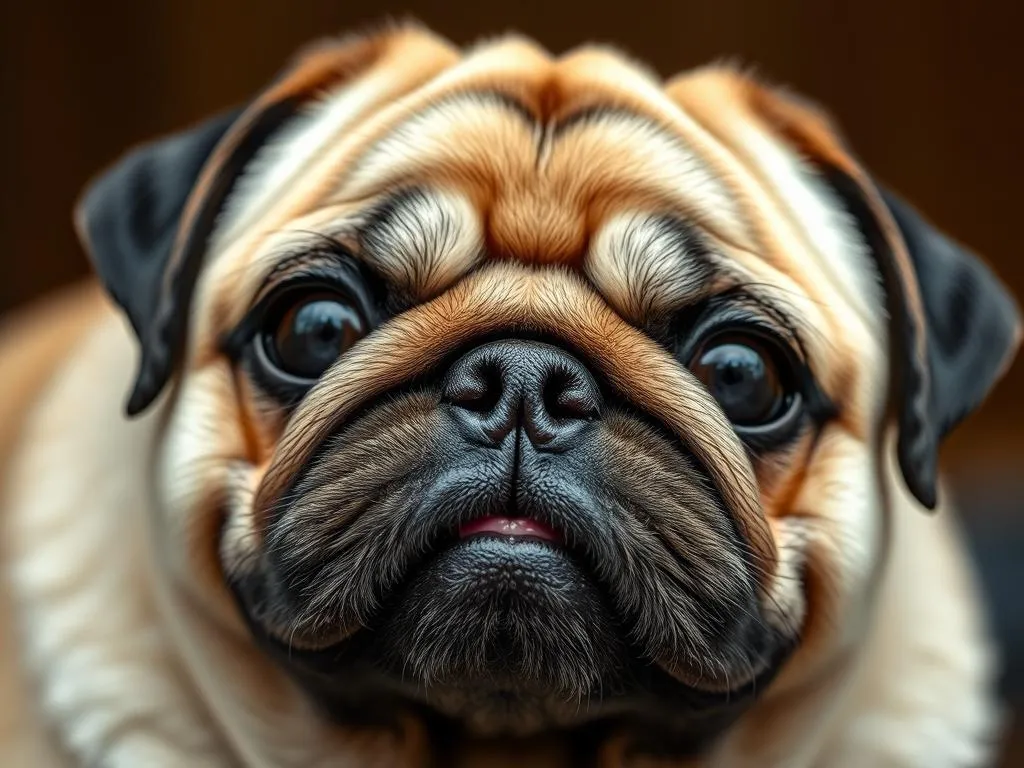
Introduction
Pugs are one of the most beloved dog breeds, known for their charming personalities and distinctive looks. With their wrinkled faces and curly tails, it’s hard not to fall in love with these little companions. However, if you’re considering bringing a pug into your home or already have one, it’s essential to understand their shedding behavior. Shedding can vary significantly from breed to breed, and how much do pugs shed is a question many potential and current pug owners ask. This article aims to provide detailed insights into pug shedding, helping you better care for your furry friend and manage their coat effectively.
Understanding Pug Shedding
What is Shedding?
Shedding is a natural process that occurs in dogs, where they lose old or damaged hair to make way for new growth. This cycle of hair loss and regrowth varies between breeds and is influenced by various factors, including genetics, health, and environmental conditions. For many pet owners, shedding can be a significant concern, especially when it comes to maintaining cleanliness at home.
Shedding in Different Dog Breeds
When comparing shedding in pugs to other breeds, pugs are considered moderate shedders. Some breeds, like Golden Retrievers or Siberian Huskies, shed heavily throughout the year, while others, such as Poodles, are known for their minimal shedding. Factors influencing shedding include the dog’s coat type, age, health status, and living conditions. Understanding these differences can help pug owners set realistic expectations regarding maintenance and grooming.
Shedding Seasons
Dogs often experience seasonal shedding, typically occurring in the spring and fall. During these times, they may shed more than usual as they adapt to changes in temperature and daylight. Additionally, climate and environment play a crucial role in shedding patterns. For example, pugs living in warmer climates may shed more frequently, while those in cooler areas might have a more consistent shedding pattern throughout the year.
How Much Do Pugs Shed?
Average Shedding Levels
On average, pugs shed moderately throughout the year. While they don’t typically produce as much fur as larger breeds, their short, dense double coat means you’ll still notice hair around your home. Compared to other small breeds, such as Chihuahuas or French Bulldogs, pugs fall somewhere in the middle regarding shedding frequency. Regular grooming can help manage the amount of hair that ends up on your floors and furniture.
Factors Influencing Shedding in Pugs
Several factors can influence how much a pug sheds, including:
- Genetics and Health: Some pugs may have a genetic predisposition to shed more than others. Health issues, such as allergies, hormonal imbalances, or skin conditions, can also lead to increased shedding.
- Diet and Nutrition: A balanced diet plays a vital role in maintaining a healthy coat. Poor nutrition can lead to excessive shedding or dull fur.
- Grooming Habits and Routines: Regular grooming can help remove loose hair and reduce shedding. The right tools and techniques can make a significant difference.
- Environmental Factors: Temperature and humidity levels can impact shedding. Dogs may shed more in hot, humid conditions as their bodies try to regulate temperature.
Signs of Excessive Shedding
While some shedding is normal, you should be aware of abnormal shedding patterns. Excessive shedding can indicate underlying health issues. Signs to watch for include:
- Patches of bald spots or thinning fur
- Increased itching or scratching
- Red or inflamed skin
- Unpleasant odors emanating from the coat
If you notice these symptoms, it’s essential to consult a veterinarian for further evaluation.
Grooming and Care Tips for Pug Owners
Regular Grooming Practices
To manage shedding effectively, regular grooming is crucial. Here are some recommended grooming tools and practices for pug owners:
- Brushes: A slicker brush or a bristle brush works well for removing loose hair.
- Grooming Frequency: Aim to groom your pug at least once a week, or more frequently during heavy shedding seasons. This routine helps maintain a healthy coat and minimizes shedding around the home.
Bathing and Skin Care
Bathing your pug can also assist in controlling shedding. However, it’s essential to strike the right balance:
- Recommended Bathing Frequency: Bathe your pug every 4 to 6 weeks, or as needed if they become particularly dirty or smelly.
- Products: Use gentle dog shampoos that are specifically formulated for sensitive skin. Avoid human shampoos, as they may disrupt the natural oils in your pug’s skin.
Nutrition and Diet Considerations
A well-balanced diet is vital for your pug’s overall health, including coat condition:
- Importance of Diet: High-quality dog food rich in essential fatty acids can significantly improve coat health and reduce shedding.
- Supplements: Consider adding omega-3 or omega-6 fatty acid supplements to your pug’s diet. These can help enhance skin health and reduce shedding.
Managing Shedding at Home
While regular grooming helps, managing shedding effectively at home is equally important. Here are some tips for keeping your space clean:
- Effective Cleaning Tips: Use a vacuum cleaner designed for pet hair and invest in lint rollers to quickly remove hair from furniture and clothing.
- Minimizing Allergens: Regularly wash your pug’s bedding and toys to reduce allergens and hair buildup in your home.
Health Issues Related to Shedding
Common Skin Conditions in Pugs
Pugs can be prone to several skin conditions that may lead to increased shedding, including:
- Allergies: Environmental or food allergies can cause itching and inflammation, leading to hair loss.
- Fungal Infections: Conditions like ringworm can result in patches of hair loss.
- Seborrhea: This skin condition can cause excessive oiliness or dryness, leading to flaking and shedding.
When to See a Veterinarian
It’s crucial to monitor your pug’s shedding patterns. If you notice sudden changes in shedding, especially if accompanied by other symptoms like itching, redness, or odor, consult your veterinarian. Regular vet check-ups can help catch potential health issues early and ensure your pug’s skin and coat remain healthy.
Conclusion
Understanding how much pugs shed is essential for both current and prospective owners. Pugs are moderate shedders, and while their unique coat requires some maintenance, it’s manageable with regular grooming and proper care. By paying attention to your pug’s health and grooming routine, you can minimize shedding and ensure your furry friend remains happy and healthy. Regular monitoring of shedding patterns will also help you catch any potential health issues early, promoting overall wellness in your pug.
FAQs about Pug Shedding
Do all pugs shed the same amount?
Not all pugs shed the same amount; genetics and individual health can influence shedding levels.
Can I reduce my pug’s shedding?
Yes, through regular grooming, a balanced diet, and proper skin care, you can help reduce shedding.
What is the best brush for a pug?
A slicker brush or a bristle brush is recommended for effectively grooming a pug’s coat.
Is it normal for pugs to shed year-round?
Yes, it is normal for pugs to shed year-round, but they may shed more during seasonal changes.
Are there any hypoallergenic dog breeds similar to pugs?
While no breed is entirely hypoallergenic, breeds like the French Bulldog or the Shih Tzu may produce fewer allergens and are similar in size and temperament to pugs.









